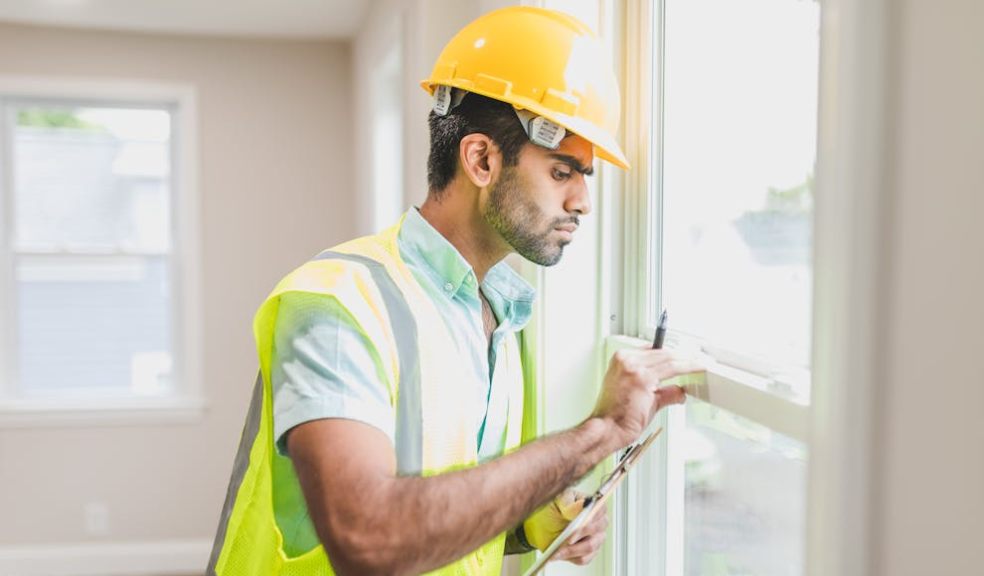
How Long Does it Take to Complete a Snagging Survey?
Are you in the process of purchasing a new property and curious about the duration it will take to complete a snagging survey? This article will give you the essential information you need to be aware of. As worries about the standard of newly constructed properties continue to grow, it is crucial to comprehend the timeline and significance of snagging surveys.
What Is a Snagging Survey?
A snagging survey is an inspection conducted towards the end of a construction project to identify and rectify any defects or issues before the property is handed over to the owner. It involves a detailed examination of the property, checking for any cosmetic or structural flaws. The survey typically covers elements such as windows, doors, plumbing, electrical systems, and finishes. The purpose is to ensure that the property meets the required standards and specifications. If you need help with a snagging survey, click here for a reliable service.
Why Is a Snagging Survey Necessary?
A snagging survey is necessary to identify and rectify any defects or issues in a newly constructed property before it is handed over to the owner. This survey is crucial to ensure that the property meets the required standards and specifications. It helps to identify any structural or cosmetic problems that need to be fixed by the developer. By conducting a snagging survey, potential issues can be addressed early on, saving time and money in the long run. It gives the buyer peace of mind and ensures that the property is in the best possible condition before they move in.
How Long Does a Snagging Survey Usually Take?
When it comes to completing snagging surveys, the time it takes can vary depending on several factors. In this section, we will talk about how long a snagging survey usually takes and what can affect this timeframe. By understanding the different factors that can influence the duration of a snagging survey, you can better plan and get ready for this crucial stage in the construction process.
Factors That Affect the Duration of a Snagging Survey
The duration of a snagging survey can vary based on several factors.
- Size and complexity of the property: Larger properties with more complex structures may require more time to inspect thoroughly.
- Number and severity of defects: The presence of numerous or severe defects will lengthen the survey duration as more time is needed to document and assess each one.
- Accessibility: Limited access to certain areas, such as locked rooms or high-level spaces, can delay the survey process.
- Client involvement: The level of client participation, such as being present during the survey or promptly responding to the report, can impact the overall timeline.
By considering these factors, you can better understand the potential duration of a snagging survey and plan accordingly.
What Are the Steps Involved in a Snagging Survey?
A snagging survey is an essential part of the process of purchasing or renting a new property, as it assists in identifying any faults or problems that need to be resolved before moving in. However, what exactly is involved in a snagging survey? In this section, we will explain the different stages of a snagging survey, starting from the preparation before the survey, the on-site inspection, and the compilation of the report. By understanding this process, you will be able to better prepare for a snagging survey and have a more seamless experience with your new property.
1. Pre-Survey Preparation
Pre-survey preparation is a crucial step in ensuring a successful snagging survey. Here are the key steps involved:
- Verify survey scope and objectives with the client.
- Gather all relevant documents, including architectural drawings and specifications.
- Coordinate with the construction team to schedule the survey.
- Prepare necessary equipment and tools, such as measuring devices and cameras.
- Review health and safety protocols to ensure a safe working environment.
- Create a checklist of areas to inspect and defects to look for during the survey.
2. On-Site Inspection
During an on-site inspection in a snagging survey, a thorough examination of the property is conducted to identify any defects or issues. This step includes a detailed assessment of various areas, such as construction, finishes, and installations.
The inspector will inspect each room and examine elements like doors, windows, walls, and floors. They will also check the electrical and plumbing systems for any potential problems.
Additionally, the on-site inspection involves inspecting the exterior of the property, including the roof, drainage, and landscaping. This comprehensive inspection aims to identify and document any defects or issues that need to be addressed.
3. Report Compilation
Report compilation is a crucial step in the snagging survey process. It involves organising and consolidating all the findings and observations into a comprehensive report. The report serves as a record of defects and provides recommendations for repairs. Here are the steps involved in report compilation:
- Gather all the inspection notes and observations.
- Categorise the defects based on their severity and type.
- Include detailed descriptions of each defect, highlighting their location and impact.
- Attach photographs of the defects to provide visual evidence.
- Assign severity ratings to each defect to prioritise repairs.
- Provide clear and actionable recommendations for addressing the identified issues.
- Format the report in a professional and organised manner for easy readability.
What Should You Expect from a Snagging Survey Report?
A snagging survey is an important part of purchasing a newly constructed property. It involves identifying and documenting any flaws or problems that need to be fixed by the developer before the final handover. But what should you expect from a snagging survey report? In this section, we will explain the main elements of a comprehensive snagging survey report, which includes a detailed list of defects, photographs of the issues, severity ratings, and recommendations for repairs.
1. Detailed List of Defects
During a snagging survey, a detailed list of defects is compiled to identify and document any issues with a newly constructed property. This list is an essential part of the survey report and helps in addressing and rectifying the identified problems.
The list typically includes a comprehensive inventory of all defects found during the inspection, such as:
- Cracks in walls or ceilings
- Leaking pipes or taps
- Electrical wiring issues
- Uneven flooring
- Faulty or damaged fixtures
- Poorly installed windows or doors
The list allows homeowners or builders to prioritize and address each defect, ensuring that the property meets the required standards and is safe for occupation.
2. Photographs of Defects
Photographs of defects play an important role in a snagging survey report. They provide visual proof of the identified issues, making it easier for both the homeowner and the builder to understand the extent of the problem. Including photographs also adds credibility to the report and prevents any potential disputes.
High-quality images should be taken from different perspectives to accurately capture the defects. Additionally, the photographs should be clearly labelled and organized within the report for easy reference. By including photographs of defects, the snagging survey report becomes more comprehensive and informative.
3. Severity Ratings
Severity ratings are used in a snagging survey to assess the seriousness of defects found in a property. These ratings help prioritize repairs and determine the level of urgency. The following steps are involved in assigning severity ratings:
- Evaluate the impact: Assess how the defect affects the functionality, safety, and lifespan of the property.
- Determine the extent: Consider the size, scope, and number of affected areas to gauge the severity.
- Consider potential consequences: Analyze the potential risks or consequences that could arise if the defect is not addressed promptly.
- Assign a rating: Use a predetermined rating system, such as a scale from 1 to 5, to assign a severity rating to each defect.
- Record the rating: Document the severity rating in the snagging survey report, along with a clear explanation of the criteria used.
By using severity ratings, property owners and developers can prioritize and plan for necessary repairs, ensuring that the most critical issues are addressed promptly.
4. Recommendations for Repairs
When it comes to recommendations for repairs in a snagging survey report, there are several steps that should be followed:
- Evaluate the severity of each defect and prioritize repairs based on safety and urgency.
- Provide a detailed description of the recommended repairs for each defect, including the materials and methods that should be used.
- Include estimated costs for each repair to help the homeowner or developer budget accordingly.
- Recommend any necessary follow-up inspections or tests to ensure that the repairs have been properly completed.
These recommendations are crucial for addressing the identified defects and ensuring that the property is brought up to the desired standard.
How Can You Speed Up the Process of a Snagging Survey?
Completing a snagging survey is an important step in ensuring the quality and safety of a newly built property. However, the process can be time-consuming and cause delays in the construction process. In this section, we will discuss how you can speed up the snagging survey process. By following these tips, you can minimize the time and effort required for a comprehensive snagging survey. From being present during the survey to addressing safety concerns, these steps will help expedite the process and get you closer to moving into your new property.
1. Be Present During the Survey
Being present during a snagging survey is highly recommended as it allows you to actively participate and address any concerns you may have. Here are some steps to follow during the survey:
- Arrive on time and be prepared.
- Accompany the surveyor during the inspection.
- Ask questions and seek clarification on any issues.
- Discuss any specific areas or items you want the surveyor to focus on.
- Take notes or pictures if necessary.
- Engage in a final walkthrough to ensure all concerns have been addressed.
By being present, you can actively contribute to the survey process, gain a better understanding of the findings, and ensure that your concerns are properly addressed.
2. Provide Access to All Areas
To ensure a smooth and efficient snagging survey, it is important to allow access to all areas of the property. This includes both inside and outside spaces that need to be examined for faults and problems. Here are the steps to follow:
- Unlock all doors and gates so that the surveyor can access the entire property.
- Remove any objects such as furniture, clutter, or personal belongings that may obstruct access to certain areas.
- Make sure that keys are available for locked areas, such as storage rooms or utility spaces.
- If applicable, provide access to rooftop areas, basements, and crawl spaces.
- Inform the surveyor about any areas that are off-limits or any safety risks that may require special arrangements or precautions.
By following these steps and granting access to all areas, you can facilitate a thorough snagging survey and ensure that all faults and problems are identified and included in the final report.
3. Address Any Safety Concerns
Addressing safety concerns is a crucial aspect of conducting a snagging survey to ensure the well-being of everyone involved. Here are some steps to address safety concerns during a snagging survey:
- Inspect for potential hazards such as loose wires, exposed pipes, or uneven flooring.
- Check fire safety measures like the presence of fire extinguishers and smoke detectors.
- Assess the stability of handrails and balustrades to prevent accidents.
- Ensure proper lighting in all areas to avoid trips or falls.
- Identify any faulty electrical outlets or switches that may pose a risk.
- Evaluate the ventilation system to ensure adequate air circulation.
- Verify the functionality of emergency exits and escape routes.
By addressing safety concerns, you can contribute to a safe and secure environment for both the surveyors and occupants of the property.
4. Respond Promptly to the Report
Responding promptly to a snagging survey report is crucial for efficient resolution of defects and timely completion of the project. Here are steps to ensure a prompt response:
- Review the report thoroughly to understand the identified defects.
- Prioritise the defects based on their severity ratings.
- Contact the appropriate contractors or professionals to schedule repairs.
- Obtain quotes for the repairs and assess their feasibility.
- Communicate the repair plan and timeline to all relevant parties.
- Coordinate access to the property for the repairs to be carried out.
- Regularly follow up with the contractors to ensure timely completion.
- Verify that the repairs have been satisfactorily completed.
- Update the snagging survey report with details of the resolved defects.
By following these steps, you can promptly address the identified defects and expedite the snagging survey process.

















